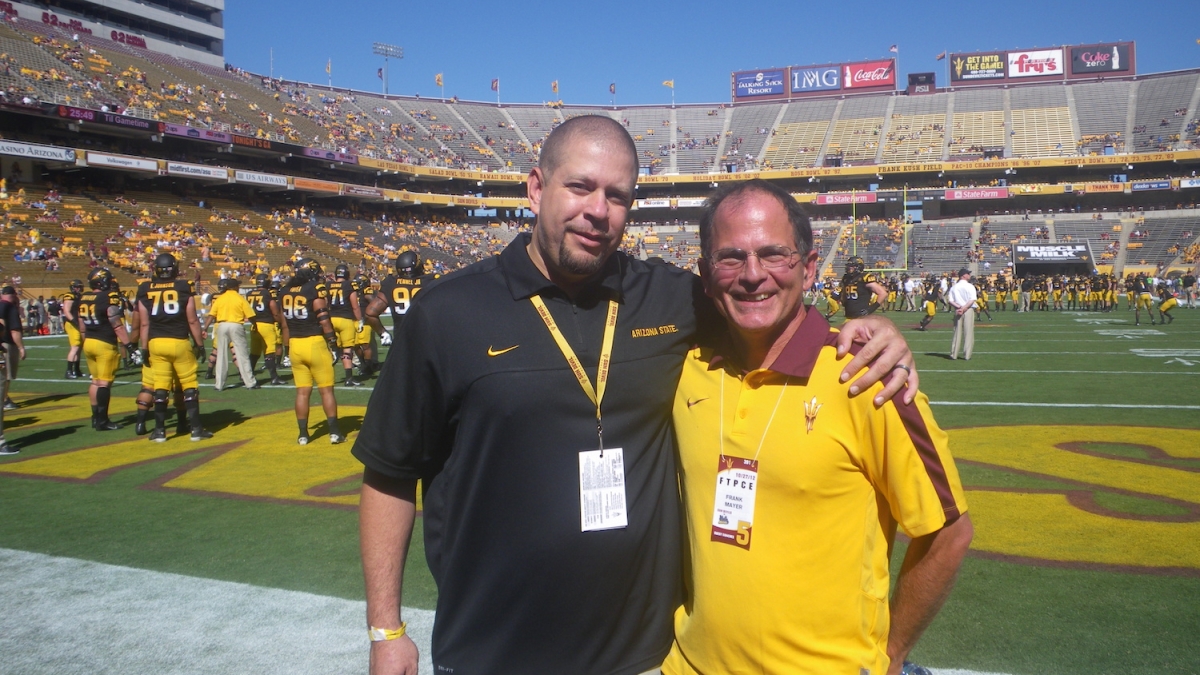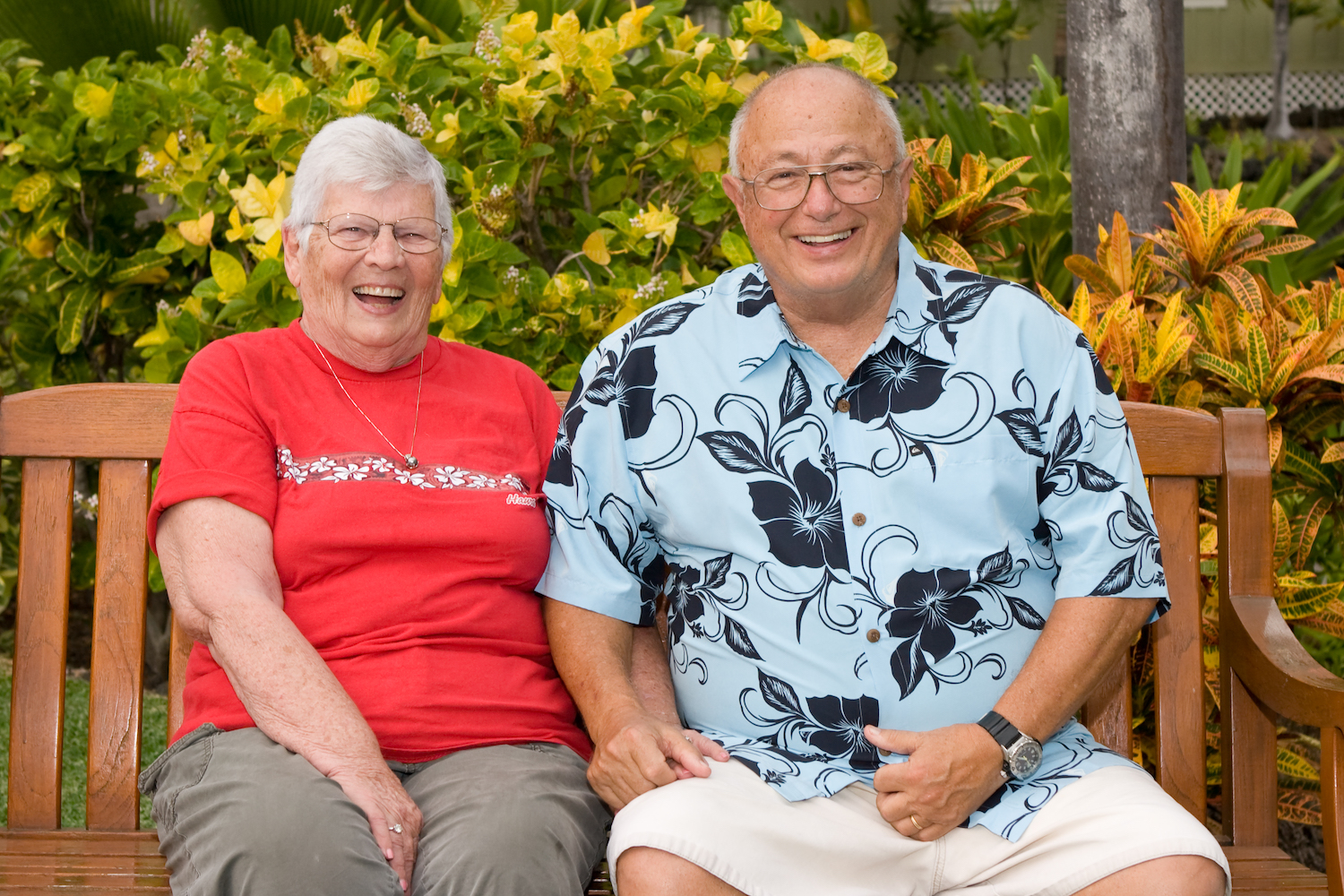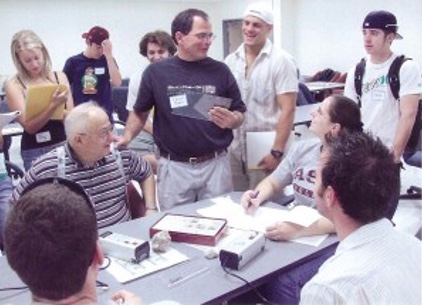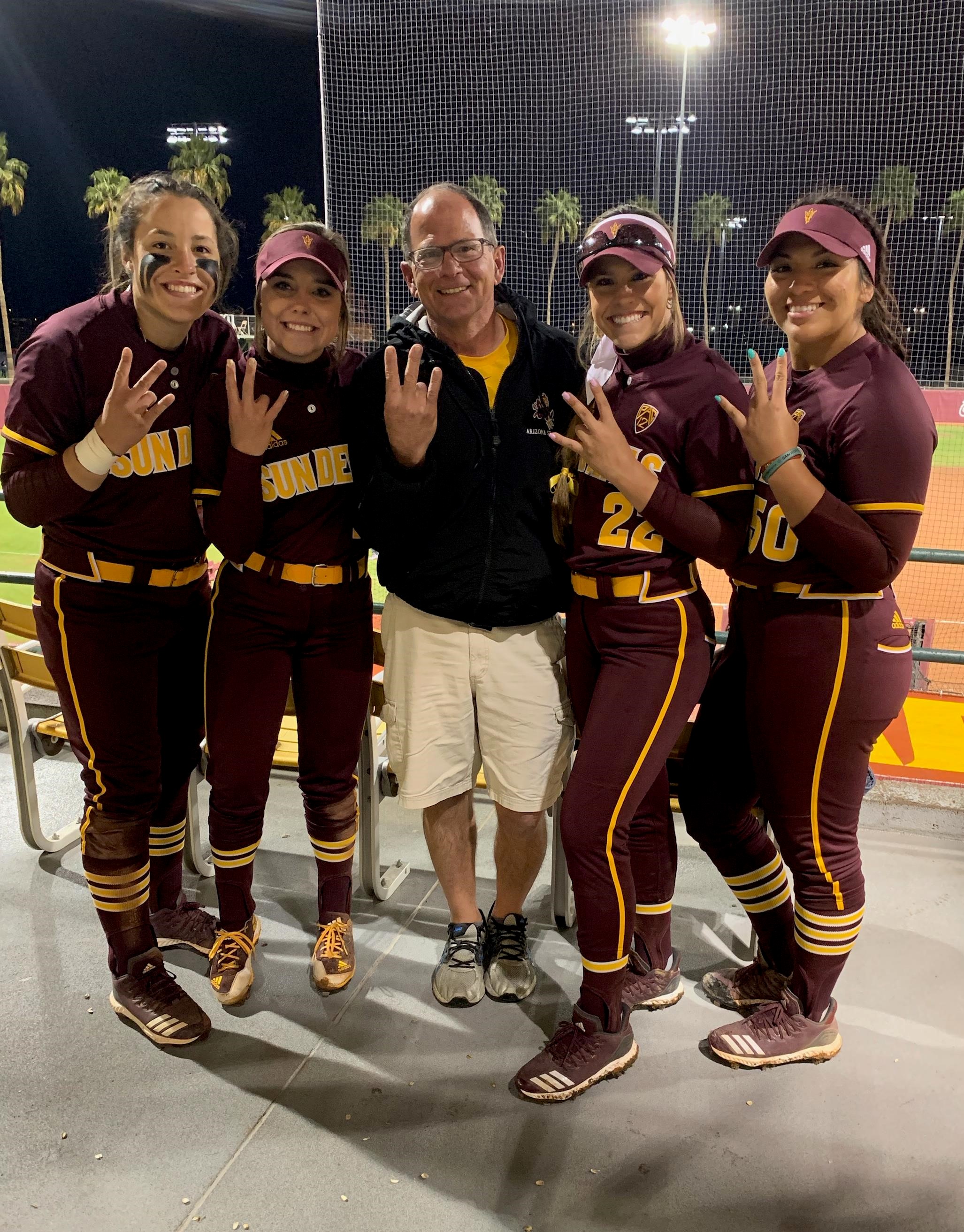Perhaps one of the most well known or studied patterns in human nature is DNA — microscopic strands of protein that code everything from our eye color, to our body type, our potential susceptibility to disease and even our personalities. It codes our past and our future by way of all sorts of hereditary traits, some may even say our legacies.
For the Mayers, their Sun Devil legacy will live on at Arizona State University through a course called Patterns in Nature, which they taught as a family for nearly three decades. While this class doesn’t cover human biology (it focuses on other naturally occuring patterns like light, prisms, optics and analytical techniques), Frank Mayer did inherit it from his parents, Elizabeth (Betty) and James Mayer.
The course, which was piloted at ASU in 1995, began as a way to train K–12 educators to bring science into the classroom in a fun, engaging way.
“Many students, when you talk about math and science, are a little intimidated by it,” said Frank, who retired from ASU this spring. “Trying to work through that fear was something that we were very pleased to see the patterns course help students overcome.”
Betty was the supervisor of service learning at ASU. In this role she led outreach and training in the education department, but what she discovered early on was that there were no science classes offered at the university to prepare elementary teachers for bringing STEM into their classrooms.
According to Frank, this is where the Patterns in Nature course was born.
In the meantime, James had been somewhat of an ASU legend across departments at the Ira A. Fulton Schools of Engineering, and was named a a Regents Professor in 1994, just four years after he came to the university and the same year that the Patterns in Nature class launched.
James was considered a celebrity in the the field of solid-state engineering for his contributions and developments to the industry. His development of an ion-implanted silicon that changed the game for semiconductor processing techniques and manufacturing won a Von Hippel Award in 1981. He was also elected to the National Academy of Engineering in 1984.
Betty and James Mayer in Kona, Hawaii, where they retired after teaching the Patterns in Nature class at ASU for more than two decades.
Patterns in Nature first began as a fully in-person course, and eventually part of the course was offered online through Blackboard (the universitywide software used in the online modality before Canvas). Keeping the integrity of the lab portion of the course required developing condensed in-person lab stations.
That’s when Frank came into the mix. Frank played a critical part in onboarding the lab component to Blackboard.
“It didn't start going to more of the hybrid version until Blackboard came along, but it was one of the first science courses to have an online component,” Frank said.
Frank, following the family profession, was quite the educator himself.
During his career as a middle and high school science teacher, Frank created and taught an Advanced Placement Environmental Science course at Arapahoe High School in Littleton, Colorado, where students could earn four science credits at the University of Colorado.
Professor Frank Mayer and his father, James Mayer, teach a class together.
“The big thing for me was working with my folks,” he said of the class. “My mom's interest was offering a course and my dad had the background to do it.”
Frank knew his father was the subject matter expert and his mother’s strength was bringing compassion into the classroom.
“My strength,” he said, “was having taught in both the middle school and the high school level.”
Combining an online modality, Betty’s sincerity, and James and Frank’s expertise as science educators, it wasn’t long before word got out how impactful the course was, and not just for teachers.
Patterns in Nature grew swiftly from its cap of about 200 students to nearly 400 students of all disciplines. By the time he taught his final lab before retiring in May, Frank calculated that there were about 15,000 students in total who enrolled in the patterns class.
Students today experience the class as a hybrid, with modules online and in-person labs designed to make the material painless and enjoyable.
Frank Mayer with the Sun Devil softball team.
Student athletes found the course especially interesting. Frank has been selected by dozens of Sun Devil student athletes as their “Most Influential Professor.”
He said it was a true joy to work with student athletes and to see them light up when learning something new about science.
“(Former ASU quarterback) Mike Bercovici is one that comes to mind, and we actually kept in touch after he finished at ASU,” Frank said. "One year, I had all five of the women's basketball team starters in class, and that was really fun.”
Beyond a long roster of student athletes, the Patterns in Nature course also became popular among countless liberal arts students seeking to fulfill their science credit requirements. Frank recalls lines of students, crowding hallways outside the office, waiting for overrides to be accepted into the course.
He firmly believes there was something about being a family unit that attracted students to the class.
“The students and their families come first,” Frank said, noting that it's an approach to teaching that he took from his mother.
“The science and the concepts can come, but they won't come if they're not in a good spot with their daily personal lives. My mom knew we had to understand the students first. Our working together became something that the students saw.
“Many students said that they appreciated the compassion that I showed as they were going through life."
The Mayers also approached science education in unique ways — from using incentives like a golden dollar, to driving a van equipped with state-of-the-art microscopes to K–12 schools throughout Arizona.
Frank taught adults, too, during a course for Intel employees completing their degrees. The company donated several computer microscopes to the lab, which then made their way to Africa during two study-abroad trips to Cape Town, South Africa, in 2000 and 2001, where the Mayer’s taught South African science teachers how to bring the content into their classrooms.
The Mayers impact was, and continues to be, invaluable to introducing young students and non-science-focused college students to materials science and engineering.
Upon his recent retirement, Frank received the type of email that all educators work for, a sincere thank you that in part read:
“I took your class my second semester of freshman year and am now graduating. I just wanted to reach out to let you know that your class left a huge impact on me! Science has never really been my thing, but I was just telling my mom about the green flash, the refraction of light and how all the colors have different wavelengths. Your course was definitely one of my favorites, and the fun, low pressure environment allowed me to learn without the stress. Thank you so so much for being such an amazing professor.”
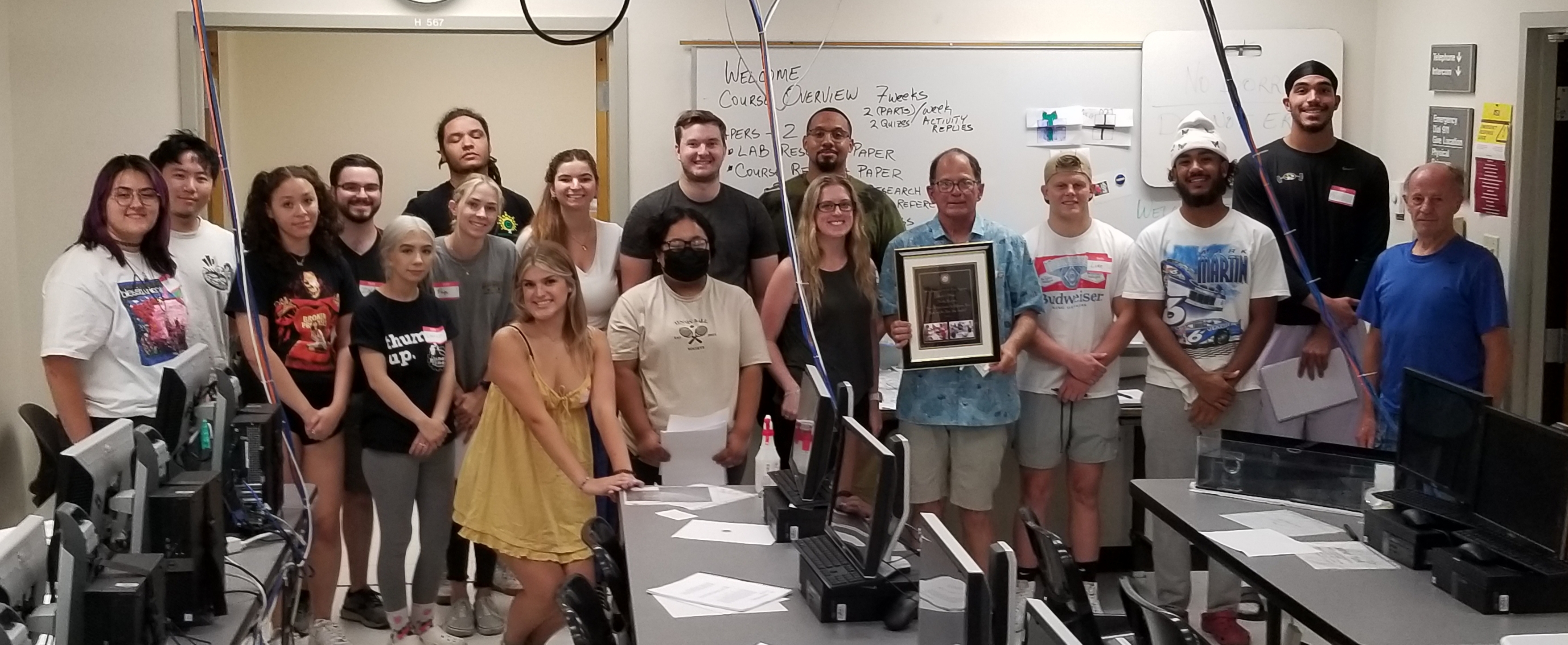
Professor Frank Mayer's last day in the Patterns in Nature lab in spring 2022.
Frank is eternally grateful for the opportunity to have worked day in and day out with his parents.
“It really was a great thing for the three of us to work together,” he said. “And I know that's really unique. What a dream to be able to go in and work with your folks and then to help them with something that was so dear to them.”
Top image: Frank Mayer (right) with Jean Boyd, deputy athletic director of ASU Athletics, at Sun Devil Stadium in 2012. All photos courtesy Frank Mayer
More Science and technology
Largest genetic chimpanzee study unveils how they’ve adapted to multiple habitats and disease
Chimpanzees are humans' closest living relatives, sharing about 98% of our DNA. Because of this, scientists can learn more about human evolution by studying how chimpanzees adapt to different…

Beyond the 'Dragon Arc': Unveiling a treasure trove of hidden stars
NASA's James Webb Space Telescope (JWST) has set a new milestone: capturing images of over 40 individual stars in a galaxy so distant that its light has traveled since the universe was only half its…

ASU selected as home and partner for CHIPS and Science Act-funded national facility for semiconductor advanced packaging
Following a week where a spirited effort by the Sun Devil football team captured the nation’s attention in the Peach Bowl, it is Arizona State University’s capability as a top-tier research…
